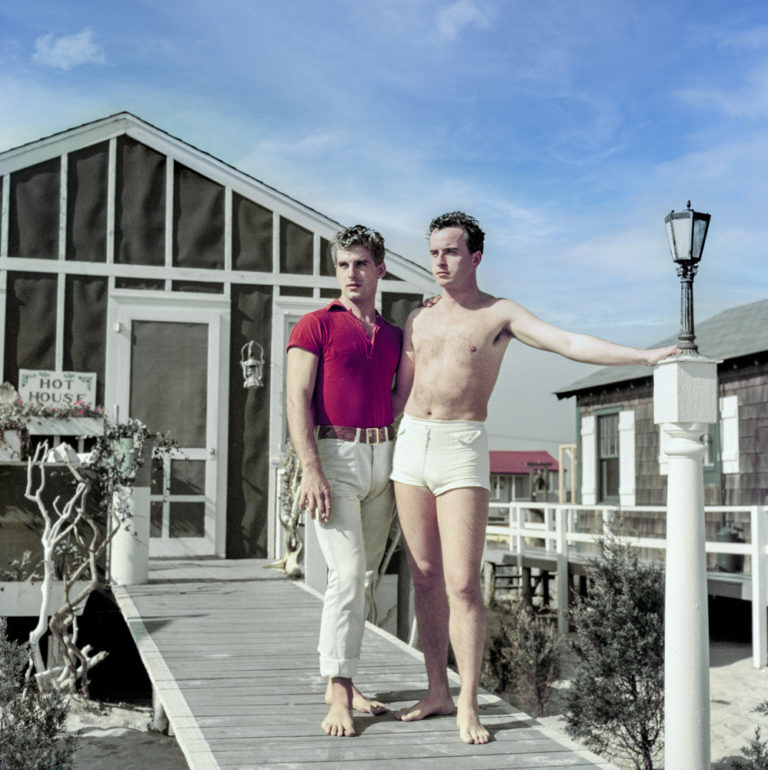

“Safe/Haven: Gay Life in 1950s Cherry Grove” is an intimate look at one of the first gay beach towns in the U.S. in Fire Island’s remote hamlet of Cherry Grove, located on the barrier island south of Long Island. Through about 70 enlarged photographs, ephemera and recorded accounts from members of the community, visitors can learn about their experiences and memories. Since the 1950s, Cherry Grove gave gay men and women a place to socialize out in the open—many met up at local restaurants or Duffy’s Hotel Bar, where same-sex dancing happened late at night. Some of these nights, plus summer events like theater performances, art shows, baseball and an end-of-season costume ball were captured in photographs. People from all kinds of backgrounds flocked to Cherry Grove—writers, artists, dancers, theater people, and Hollywood celebrities including Christopher Isherwood, Patricia Highsmith, and Tennessee Williams. Truman Capote, the novelist, playwright, and journalist whose flamboyant lifestyle contributed to his social celebrity, stayed at Carrington House just outside of the Grove in 1957, where he wrote parts of the novella Breakfast at Tiffany’s. Unfortunately, as more gay people arrived here in the 1950s, longtime residents tried to “reinstate decent behavior,” which spurred on police raids through the 1960s. More recently, after the 1960s, the community became more welcoming to Black and Latino gay people and working-class gay women began spending more time there. The community took another hit during the AIDS crisis in the 1980s. All of this and more is documented in this celebratory exhibit of Cherry Grove. “Cherry Grove on Fire Island became a weekend and summer destination for gay men and women in the pre-Stonewall era of the 1950s and 1960s,” said Dr. Louise Mirrer, president and CEO of New-York Historical. “At a time when they faced homophobia and persecution, the residents of Cherry Grove found a sanctuary where they could socialize and express themselves freely. We are proud to partner with the Cherry Grove Archives Collection to display these joyful images.” It’ll be on view in New-York Historical’s rear courtyard through October 11. Admission is free; timed-entry tickets can be booked online in advance.